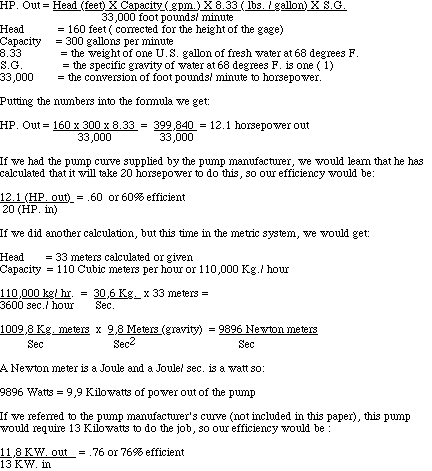nicwong7
Mechanical
- Feb 12, 2015
- 13
Hello experienced engineers out there,
I am curious what is the difference between Bowl and pump efficiency. When i am evaluating some quotes, some suppliers do quote,
bowl/pump efficiency : 88%/87.7%
Thanks in advance!
I am curious what is the difference between Bowl and pump efficiency. When i am evaluating some quotes, some suppliers do quote,
bowl/pump efficiency : 88%/87.7%
Thanks in advance!


